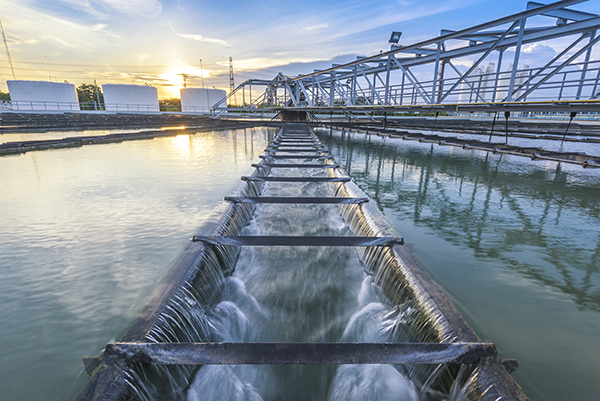Tackling odour nuisance in air emissions from wastewater treatment plants
Wastewater treatment plants (WWTPs) are vital components of our infrastructure – yet they often create odour nuisance for those living nearby. In this article we will discuss common problems and effective solutions to remove odorous components from emissions.
The problem
WWTPs often produce emissions from multiple sources: for example, from sludge storage silos or buffer tanks; during the process of dewatering sludge for transportation; and from hall ventilation.
The chemicals responsible include organosulfur compounds such as mercaptans including dimethyl sulfide (DMS) or dimethyl disulfide (DMDS); aromatic hydrocarbons; hydrogen sulfide (H₂S); and ammonia (NH₄).
Odour limits depend on the country, the WWTP’s environmental permit, and how close the WWTP is to residential areas. The problem is exacerbated by the expansion of cities, with more housing being built closer to existing WWTPs.
One WWTP in the Netherlands needed to treat both emissions from hall ventilation and also point emissions from sludge mixing and storage.
The hall ventilation produced a very high flow rate with a low concentration of pollutants, typically sulfuric compounds.
The point extraction from sludge mixing and storage, however, produced a low flow rate of around 1 000 to 2 000 m3 per hour with a high concentration of pollutants, including inorganic compounds.


The solution
For the hall ventilation, we installed activated carbon filtration as a standalone treatment since the low concentrations can be removed completely. The installation is capable of handling a flow rate of 10-30 000 m3/h.
The sludge mixing and storage point extraction now has a two-step filtration process in place.
The first is a biofilter, which uses bacteria to process inorganic compounds such as ammonia. DESOTEC activated carbon filtration systems could be used to adsorb small amounts of ammonia, but they are a more reliable solution for sulphur components. Therefore, biofilters are typically more suitable as an initial step for ammonia removal.
However, odour emissions are typically discontinuous with occasional high peaks, which can overwhelm the bacteria in biofilters and cause a breakthrough of pollutants and a recurrence of odour issues.
Therefore, a DESOTEC activated carbon filter has been installed as a complementary treatment to polish the flow before it is discharged odour-free into the atmosphere.
The results
DESOTEC engineers have drawn on their extensive expertise to design the optimal filling for the activated carbon filters, focusing on ammonia and organosulfur compounds. The result is that the odour has been completely removed, and cannot be detected by those living nearby.
Odour removal was just one part of the client’s requirements. It is also aiming to be CO₂ neutral by 2025, and is therefore placing its sludge into an anaerobic digester on site to produce biogas for energy. An additional advantage is that transportation of sludge is no longer necessary.
Many WWTPs and sewage treatment plants are following similar models, with some bringing sludge from other plants to their own sites for mixing to create biogas.
This is a further potential application where DESOTEC solutions can help – filters which treat the pollutants in biogas or biomethane are also available.
While these are all long-term applications, DESOTEC can also provide emergency and short-term solutions. We work 24/7, and can install our mobile filters swiftly, for example when bacteria in a biofilter die off unexpectedly.
Our engineers can advise on the best types of carbon, including impregnated carbon, for different applications. Whatever the situation, we work with clients to find the optimal solutions for their site and its neighbours.
Contact our experts
Let’s discuss how activated carbon filtration solutions could work for your WWTP. Get in touch with our engineers today.
Contact our expertsContact our experts
Let’s discuss how activated carbon filtration solutions could work for your WWTP. Get in touch with our engineers today.
Contact our experts-
Water & liquid purification
Our mobile filtration solutions purify wastewater and groundwater, and ensure process liquids reach high purity standards. -
Our unique service
Our closed-loop, full-service model is as unique as your business needs. We’ll define the right filtration setup and safely recycle filtration waste, making it easy to go green. -
Your sustainability journey
We care about protecting our air, water and soil for future generations, just like you. Our filtration solutions help you meet environmental standards, reducing your carbon footprint.


